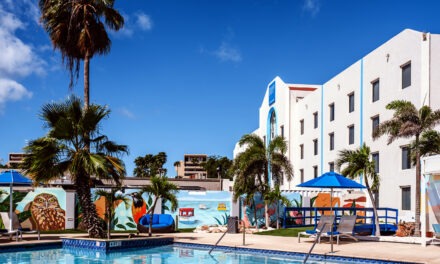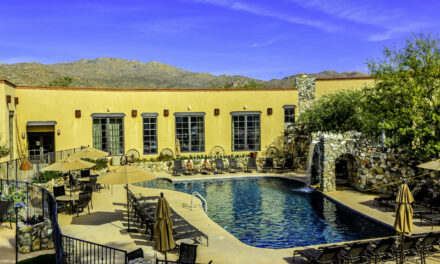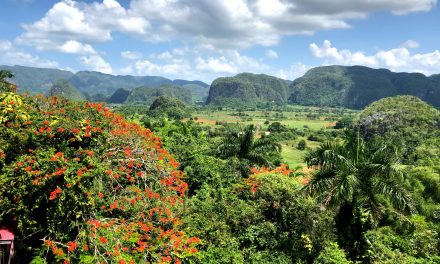Martinique
France in the Caribbean – Escape to Martinique’s Beaches, Rainforests, and Culture
Article and photography by Judi Cohen
Martinique is a small, mountainous, and relatively lesser-known island in the Caribbean. As an overseas French territory in the Lesser Antilles, it lies between Dominica and St. Lucia—offering travelers a unique taste of France in the Caribbean. Here, I discovered a rich blend of African, French, and West Indian cultures, deep-rooted history, and a wealth of adventure—all in a UNESCO-designated paradise.
I recently returned from my first visit, crisscrossing the island from the Atlantic Ocean to the Caribbean Sea, and from the south to the north. I heard it called a “hidden gem” many times—and now I understand why.
Here are five reasons Martinique should be your next Caribbean island getaway.
1. Nature – A UNESCO Paradise
Martinique’s natural beauty is jaw-dropping, and one of the best ways to experience it is on foot. I set out on the Couleuvre Waterfall Trail in Le Prêcheur. The 3 km roundtrip hike to Martinique’s tallest waterfall was a steep climb with a 250-metre vertical rise. I scrambled over roots and flowing creeks in the dense rainforest beneath towering monkey trees and bamboo stands. I spotted colorful flowers, noisy birds, tiny green lizards, and twisted hanging vines.
Just a five-minute walk away is Anse Couleuvre, one of the island’s notable black sand beaches.
For avid hikers and nature lovers, Mount Pelée—rising to 1,397 metres above sea level—is a major draw. In 2023, the volcano and its surrounding rainforests were designated a UNESCO World Heritage Site. The entire island also became part of UNESCO’s World Network of Biosphere Reserves in 2021.
2. Boutique Hotels & One All-Inclusive Resort
Unlike other Caribbean islands dominated by large resorts, Martinique offers independently owned boutique hotels, eco-lodges, villas—and just one all-inclusive beach resort.
At the southern tip of the island is Club Med Buccaneer’s Creek, Martinique’s only all-inclusive. Built on a former palm farm, the resort captures the island’s laid-back charm with hammocks and lounge chairs lining the beach under swaying palms. Opened in 1969 and recently renovated, the resort was buzzing with French-speaking families from France and Canada.
My two-night stay at Village Pomme Cannelle, tucked into the mountains near Le Prêcheur, was a tranquil escape with breathtaking views of Mount Pelée in one direction and the Caribbean Sea in the other. My cozy studio suite had a standalone tub, separate bathroom and shower, and a dining terrace perfect for morning coffee with views over the pool and ocean.
At Hôtel Bambou in Trois-Îlets, I was immersed in Creole culture with vibrantly painted bungalows, traditional cuisine, and a beachfront location at Anse Mitan.
After an off-road drive accessible only by 4WD, we arrived at Ecolodge Parfurat, perched on a farm overlooking the Atlantic Ocean. The owners welcomed us as goats roamed nearby. With just 14 guest accommodations, the lodge blends eco-conscious travel with understated luxury. I wandered through organic gardens and sipped fresh guava juice while enjoying accras de morue (salt cod fritters) on a sunny terrace beside an infinity pool.
3. Beaches and Boating
One highlight of my trip was experiencing Martinique from the water. Early one morning, we boarded Kata Mambo 2, an electric catamaran, at the marina in Les Trois-Îlets. We sailed across the Bay of Fort-de-France with the warm Caribbean breeze in our hair and turquoise waters swirling below. Before anchoring in a quiet cove surrounded by steep cliffs, we watched pods of leaping porpoises and then snorkeled with sea turtles in the crystal-clear sea.
Later, back on the sandy Club Med beach, we were invited by Captain Steeve to sail aboard Yole Ronde—a traditional light, tapered boat once used by fishers and now central to Martinique’s national sport. Learning I would need to balance on long poles extending off the hull, I politely declined and joined the escort boat instead. From there, I marveled at the athleticism and grace of the yole crew. Our boat carried musicians from Association Tanbou K’raib, adding rhythm and energy to the experience.
4. History and Culture
Martinique’s lush, green landscapes hide a painful past. African slaves were once brought here to work the sugar cane plantations—a practice abolished in 1848. Visiting La Savane des Esclaves, an open-air museum in Les Trois-Îlets, was moving and eye-opening.
Founded by Martinique native Gilbert Larose, who spent 24 years building the museum, it serves as a powerful reminder of the island’s history. “Slavery has left us with many scars,” Larose told us during a private tour. “But it’s important for me to tell the story to my children, grandchildren, and visitors to the island.”
Another cultural highlight was discovering the art of rhum agricole, Martinique’s signature rum made from fresh sugarcane juice rather than molasses. The island’s rums carry a prestigious AOC designation, similar to fine wines.
At Habitation Clément, a former distillery turned museum, I toured the old Creole mansion, dating back to 17th century, and learned how sugarcane is transformed into rhum agricole, followed by tastings.
At Distillerie Depaz, perched at the base of Mont Pelée, I walked through sugarcane fields, visited the historic family mansion, toured the production facilities, and sampled a range of rums.
In downtown Fort-de-France, hidden within the crumbling Palais de Justice, I found the Atelier Artperkut studio of Sylviane Eneleda. She crafts the dramatic Carnival masks for Martinique’s famous celebration. With Carnival just a day away, she proudly showed us her intricate creations and explained the traditions behind them.
5. Culinary Paradise
No visit to Martinique would be complete without diving into its incredible cuisine. From grilled lobster and fresh-caught fish to accras de morue and colombo de poulet—a fragrant chicken dish influenced by Indian flavors—the food was consistently delicious and deeply satisfying.
At Habitation Céron, a 17th-century estate, turned cocoa farm and agro-tourism site, we enjoyed a farm-to-table lunch beneath a thatched roof with fresh rum punch. A walk through the tropical gardens led us to a massive 350-year-old zamana tree—once voted the most beautiful tree in France—and smaller trees draped in spider webs. One worker coaxed a tarantula from its web to crawl across his hand. (Don’t try this yourself!)
On the beach at Le Petibonum restaurant in Le Carbet, “Chef Hot Pants,” as he’s affectionately known, served seafood caught by local fishers alongside local rums and beers. His colombo over rice was richly spiced and full of flavor.
As my journey came to a close, I felt immense gratitude for the experiences I had packed into just five days. I had tasted, explored, and immersed myself in Martinique’s nature, culture, and cuisine. Yet, I left knowing the island still holds many more stories, secrets, and surprises. This truly is a hidden gem that offers the best of both France and the Caribbean—and I hope to return to uncover more of the magic on the Island of Flowers.
Air Canada flies direct from Toronto to Martinique seasonally from mid-December to mid-April, and direct from Montreal year-round.












